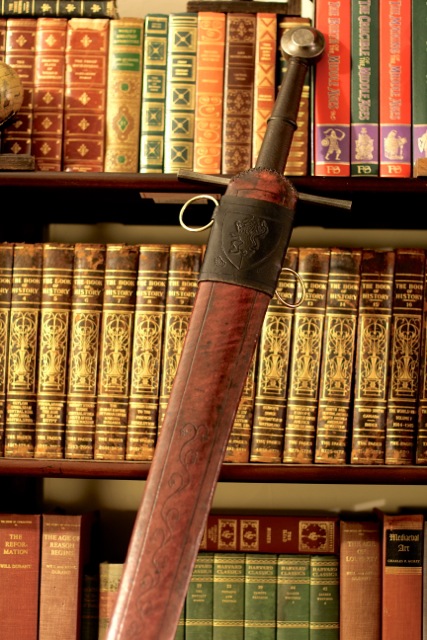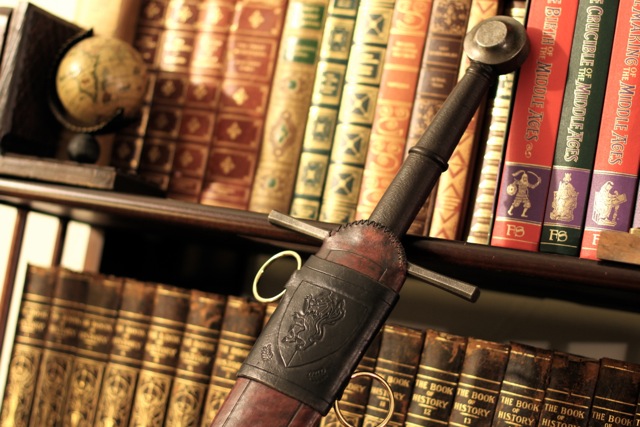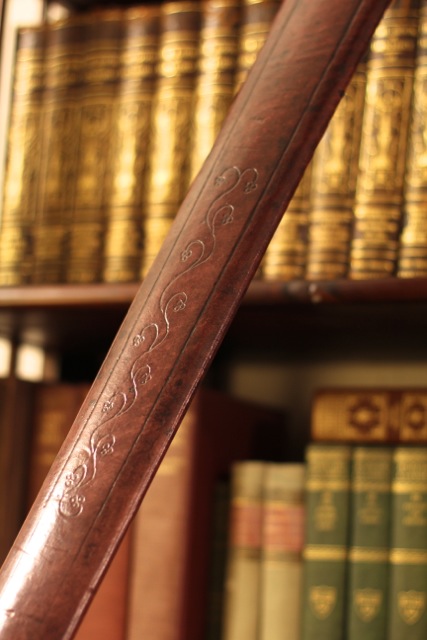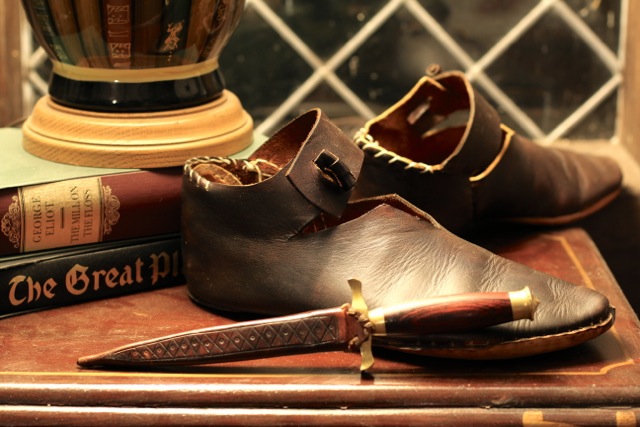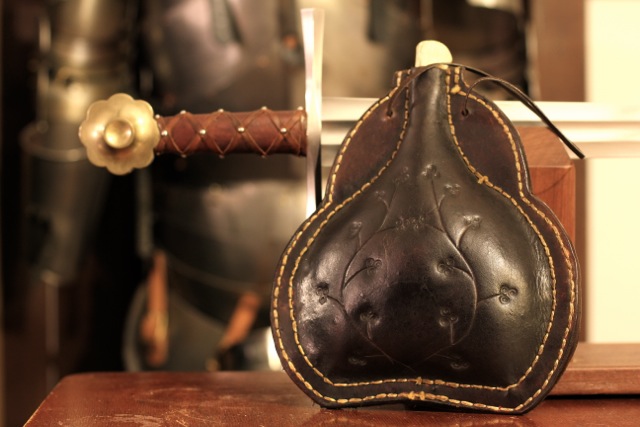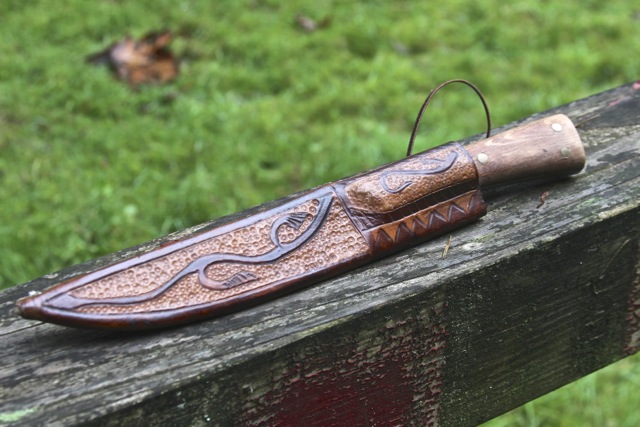I've taken in so much helpful information on making my own gear but I've never really taken the time to show off any of the results. I play the role of a late 14th century leather worker at Camlann Medieval Village in Washington state and I've spent the past couple of months attempting to put together a wide enough variety of objects to give the public a good idea of the craft.
Since this is for educational purposes, it would be great if I could get some feedback on what is and isn't period appropriate so I can be aware of any shortcomings in my presentation.
First, the scabbard.
It's for an Albion Crecy with aged furniture and dark brown grip.
I used the carved core method on some poplar ($17 for two 1/4" slats at Home Depot) and chisled it down, then hit the ouside with a belt sander. It's laced up the back with a typical X-stitch.
One really odd thing I experienced was with the fit. When I glued it together I discovered that it was much to tight - I could draw it, but it took some serious effort. Then while stitching the leather I heard a little crack and then it instantly got quite loose! Not rattling, but I couldn't hold it upside-down any more. By the time I finished stitching it seemed to find a nice middle ground and is now perfect. Is this at all normal?
Anyway, the late 14th century is a really tricky period to get info on. Too late for the laced style of suspension you see on 13th c stuff but to early for the knotted style that's so common in 15th c examples. I did manage to find a few examples of lockets, but my metalwork abilities are iffy so I tried a leather alternative. I don't know if there is a precedent for this but the design was simple and it functions in about the same way. The rings are a little too big but they're what I had on hand and I can always switch them out later.
No chape yet, but I'll either buy or make one soon enough. I used antique gel instead of my normal dye method, and the result was a little more extreme than I expected, but it's cool and interesting in its own way.
I don't see a lot of examples of tooling on period scabbards, but I couldn't help myself so there you have it :D
Vine work was inspired by the some of the borders on the lutrell psalter.
Next up is the belt for it! Shouldn't take long but I may need to order some period buckles.
